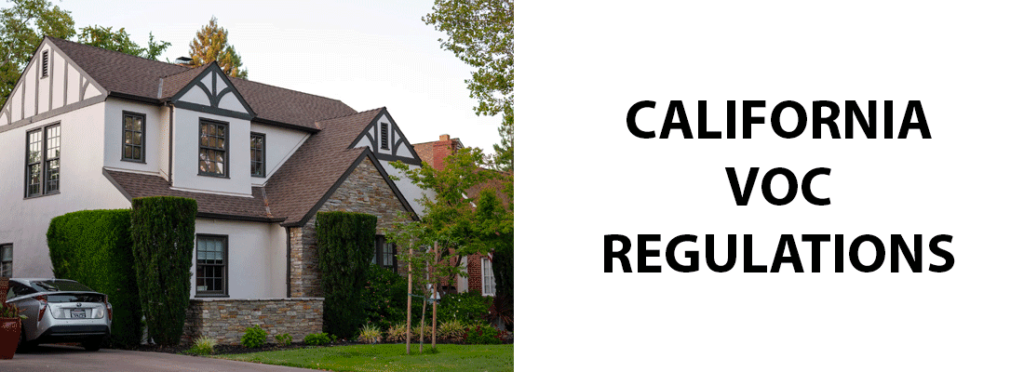Navigating the ins and outs of California VOC regulations can feel overwhelming, but it doesn’t have to be. These rules play an important role in keeping the air we breathe clean. Understanding the legal limits and guidelines is always a good idea whether you’re a homeowner tackling a DIY project or a contractor trying to stay compliant.
California VOC Regulations
California VOC regulations are rules that limit the amount of volatile organic compounds (VOCs) that can be released into the air. VOCs are chemicals found in many common products like paints, coatings, and adhesives, and they can harm the environment and our health. California has some of the strictest rules in the country to control these emissions. These regulations help keep the air cleaner by ensuring that products used in construction, manufacturing, and even home projects release fewer harmful chemicals. Manufacturers, sellers, and users of these products in California need to follow these rules.
California VOC Paint Limits
Here’s a breakdown of some specific ranges and limits:
- Flat Paints and Coatings: Up to 50 grams per liter (g/L)
- Non-Flat Paints (e.g., Satin or Eggshell): Up to 100 g/L
- Non-Flat High Gloss Paints: Up to 150 g/L
- Indoor Carpet Adhesives: Up to 30 g/L
- Wood Flooring Adhesives: Up to 250 g/L
- Sealants (varies by type): Generally between 250 to 750 g/L
These limits are mandatory for products sold or used in California and are periodically updated to reflect new standards, so staying informed is key. Manufacturers must ensure their products meet these VOC limits before they can be sold or used in California.
Why is VOC bad?
VOCs are harmful because they can negatively impact both health and the environment. When released into the air, VOCs contribute to air pollution and can cause issues like respiratory problems, headaches, and irritation of the eyes and throat. Prolonged exposure to high levels of VOCs can lead to more serious health risks. Additionally, VOCs can harm the environment by affecting plant life and degrading overall air quality. Reducing VOC emissions is important to protect both human health and the environment.
What Are California’s VOC Laws?
California’s VOC laws encompass more than just limits on VOC content in products like paints and adhesives. These laws also include requirements for proper labeling, ensuring that consumers can easily identify low-VOC products. Additionally, California has regulations that cover the manufacturing, distribution, and sale of VOC-containing products, meaning that companies need to ensure their products comply with state standards before they reach the market.
Another key aspect of California’s VOC laws is the periodic updating of standards. The California Air Resources Board (CARB) regularly reviews and tightens VOC limits as technology advances, pushing for even lower emissions over time. This ensures that the state continues to lead in reducing air pollution and protecting public health.
Moreover, enforcement of these laws includes penalties for non-compliance, which can include fines for manufacturers, distributors, or retailers who sell products that exceed the allowed VOC limits.
How California VOC Regulations Affect Which Houses Can Be Painted
California VOC regulations directly impact the types of paints and coatings that can be used on houses, which can influence how and where homes can be painted. Because of the regulations on the amount of VOCs allowed in paints and other products used for painting, not all paints available nationwide can be used in California.
For homeowners and contractors, this affects the selection of paints for both interior and exterior projects. Paints with higher VOC levels, which are often more durable or quick-drying, may not be permitted in California. As a result, those working on houses in California need to choose from products that meet the state’s stringent VOC limits. This might affect the project’s cost, timing, or the final finish.
In some cases, the regulations could also influence the timing of painting projects, especially concerning environmental issues like air quality. Compliance with these rules is a must in order to avoid fines and contribute to healthier indoor and outdoor environments.
The California VOC Regulations Guide Conclusion
Understanding and adhering to California’s VOC regulations is crucial for anyone involved in painting or renovation projects. These rules are designed to protect both the environment and public health by limiting the harmful emissions that certain products can release. If you’re in the Sacramento area and need a painter who’s knowledgeable about these regulations and committed to quality work, contact our team at DL Painting.

